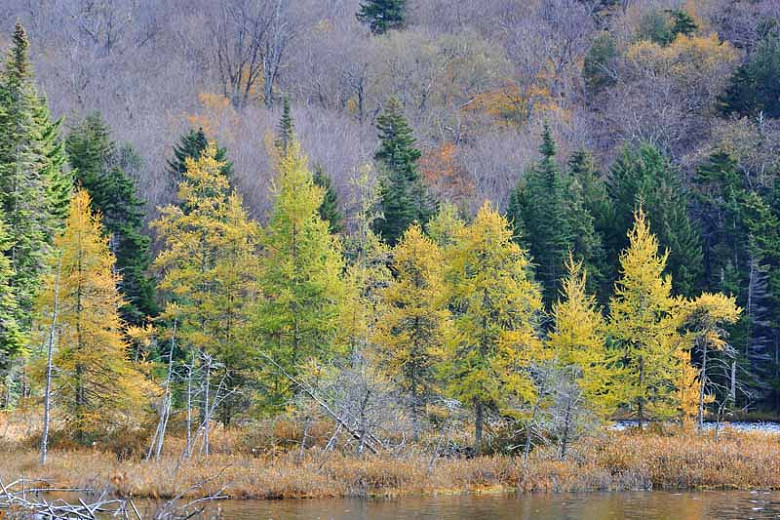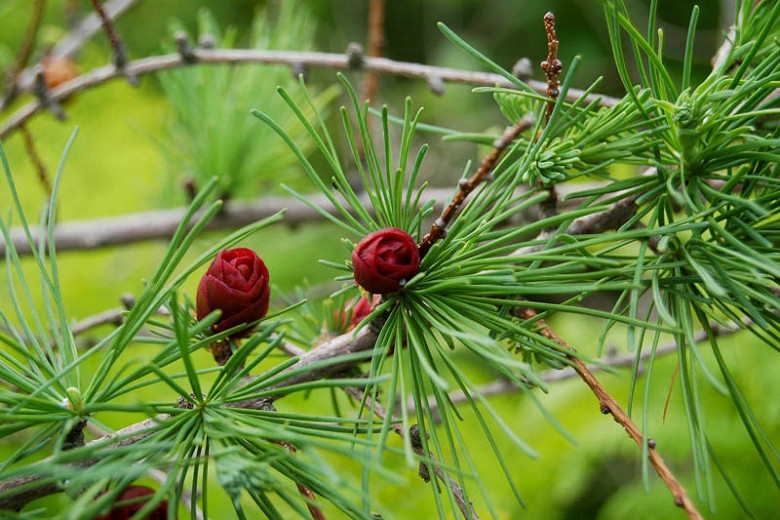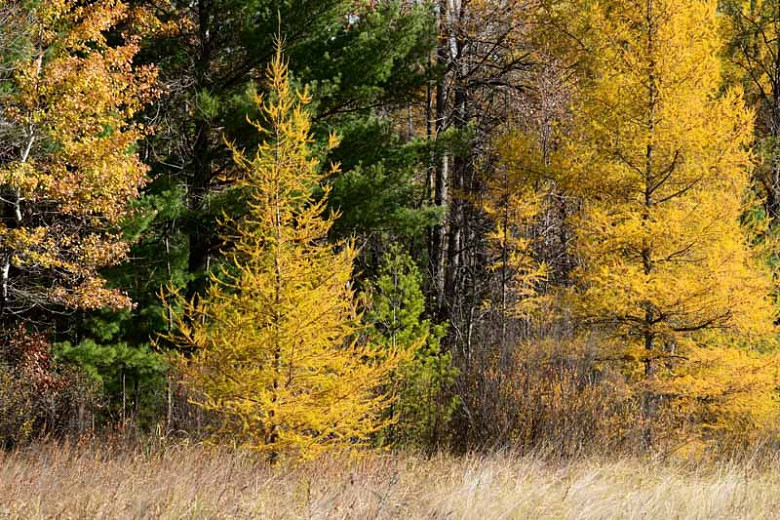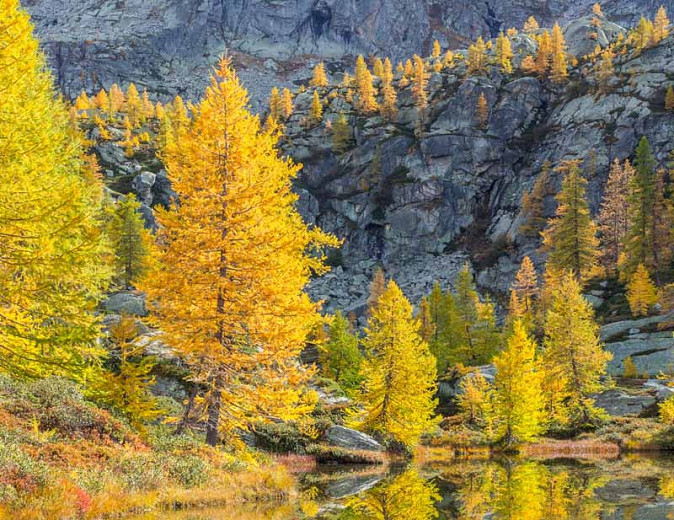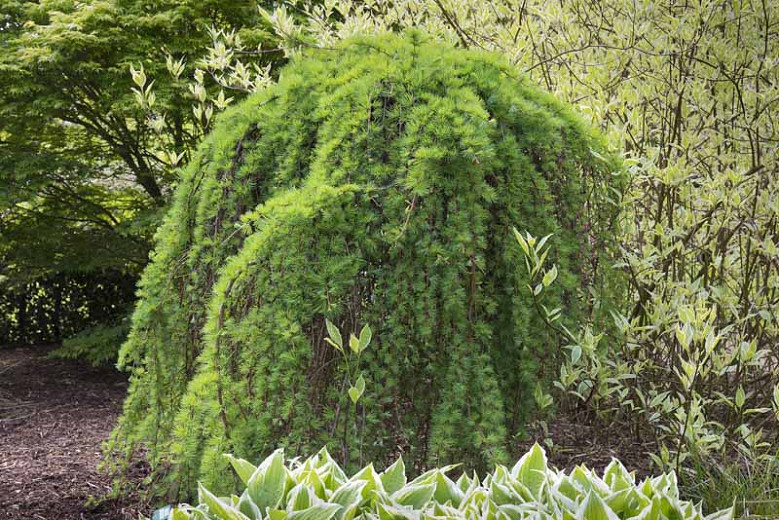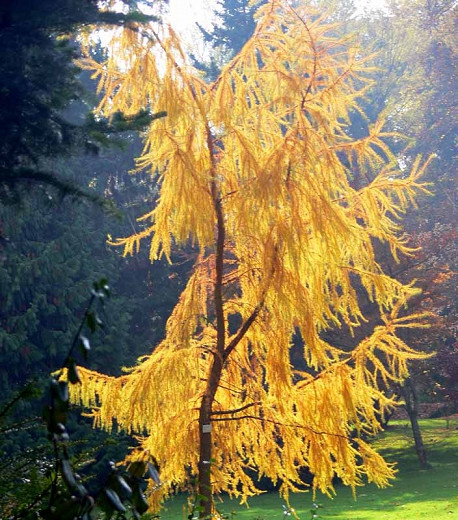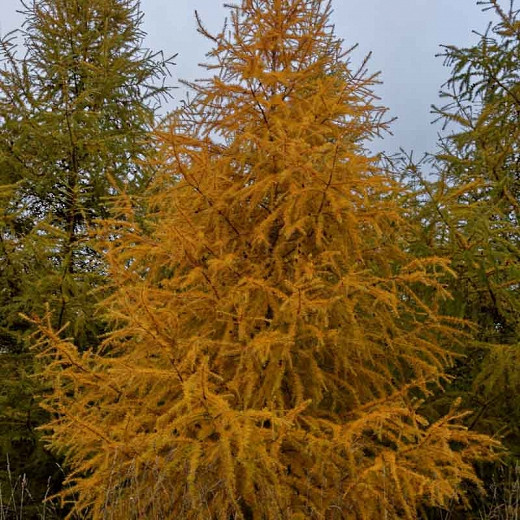Larix laricina (American Larch)
Perfect for very cold climates, Larix laricina (American Larch) is a small to medium-sized, deciduous conifer of elegant beauty. It features an upright, pyramidal form with horizontal to slightly ascending branches. Unlike most cone-bearing trees, American Larch loses its foliage each winter. Its light blue-green needles turn bright yellow before they fall in the fall. They are produced spirally on long shoots and in dense clusters on long woody spur shoots. The conical cones, the smallest of any larch, are bright red at first, later turning brown and opening to release the seeds when mature, a few months after pollination. The bark of young trees is gray, smooth, becoming reddish brown and scaly. Fast-growing and very hardy, American Larch makes a wonderful specimen in a large landscape where its pristine bright green spring foliage and lustrous gold fall display can be admired.
- Grows up to 40-80 ft. tall (12-24 m) and 15-30 ft. wide (4-9 m).
- A full sun lover, this plant is easily grown in moist, acidic, well-drained soils. Intolerant of full shade, dry soils, and pollution.
- Virtually pest free. Watch for honey fungus and canker.
- No pruning required
- Native to Northern North America
Requirements
| Hardiness | 2 – 5 |
|---|---|
| Plant Type | Conifers, Trees |
| Plant Family | Larix – Larches |
| Exposure | Full Sun |
| Season of Interest | Spring (Mid,Late)Summer (Early,Mid,Late)Fall |
| Height | 40' – 80' (12m – 24m) |
| Spread | 15' – 30' (4.5m – 9m) |
| Water Needs | Average |
| Maintenance | Low |
| Soil Type | Clay, Loam, Sand |
| Soil pH | Acid, Neutral |
| Soil Drainage | Moist but Well-Drained |
| Characteristics | Showy |
| Native Plants | United States, Alaska, Midwest, Illinois, Indiana, Michigan, Minnesota, Ohio, Wisconsin, Northeast, Connecticut, Maine, Massachusetts, Maryland, New Hampshire, New Jersey, New York, Pennsylvania, Rhode Island, Vermont, Southeast, West Virginia |
| Tolerance | Deer |
